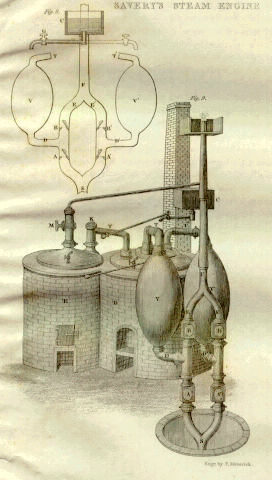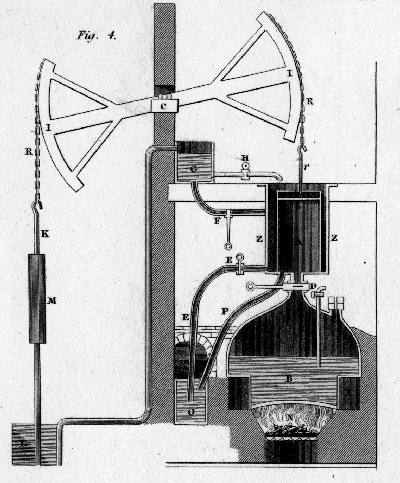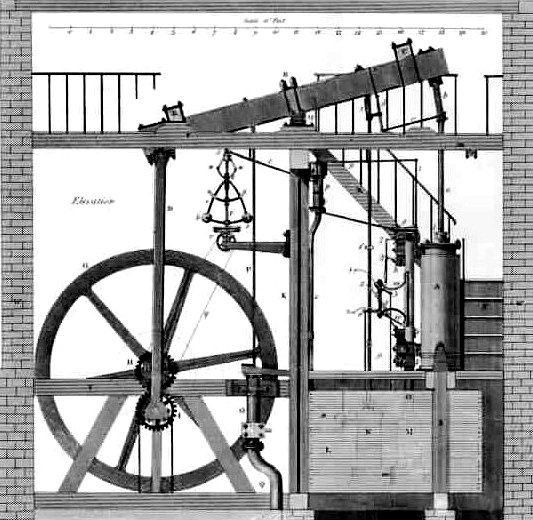Today, let's look at steam engines in eighteenth-century England. The University of Houston's College of Engineering presents this series about the machines that make our civilization run, and the people whose ingenuity created them.
Steam engines were England's gift to the world in the eighteenth century. Thomas Savery began it all with his steam pump in 1698. He was followed by Thomas Newcomen's first real steam engine in 1711. When James Watt sold his first engine in 1769, steam engines had been around for seventy years. Almost 600 of them had been built.
What Watt did was to make improvements that left steam engines four times more efficient. His first engines put out only about six horsepower -- not much more than the first Newcomen engines -- but they were smaller and they ate far less coal. And in less than 20 years he'd increased the output to as much as 190 horsepower.
In those days 190 horsepower would by no means fit under the hood of a car. Those early engines were enormous. The cylinders of the old Newcomen engines were from two to ten feet in diameter. A Newcomen engine was a two-story structure. Watt's engines were more compact, but their cylinders were still between one-and-a-half and five feet in diameter.
Historians Kanefsky and Robey tell us that, as good as they were, Watt's engines didn't dominate production. By the end of the century, over 2000 steam engines had been built in England, and fewer than 500 of them were Watt engines.
Actually, steam engines never did become the major power source during the eighteenth century. Most of the power still came from waterwheels and windmills. Steam-engine factories never did produce more than a few hundred total horsepower per year. But two things were happening: Steam power picked up those specialized tasks that were absolutely essential for the industrial revolution -- like pumping water out of mines so we could have the coal and metals we needed. And steam power was the basis for the heavy power industries that so changed nineteenth century life.
By 1800 the total power capacity of all the steam engines ever built was about the same as one of our larger diesel engines today. They didn't change the English countryside overnight. But they were the stalking horse of the greatest revolution the world had ever seen -- the agents of changes that far outstripped anything their makers had ever thought of.
I'm John Lienhard, at the University of Houston, where we're interested in the way inventive minds work.
(Theme music)
Kanefsky, J.,and Robey, J., Steam Engines in 18th-Century Britain: A Quantative Assessment, Technology and Culture, Vol. 21, No. 2, April, 1980, pp. 161-186.
This episode has been greatly revised as Episode 1440.

(From Steam Engines Familiarly Explained, 1836)
Savery's 1698 Steam Pump

(From the 1832 Edinburgh encyclopaedia, 1836)
Newcomen's Atmospheric Steam Engine

(From Steam Engines Familiarly Explained, 1836)
Watt's Condensing Steam Engine